EN: Certain elements of this interview have been edited for clarity…and to protect the innocent
I first met Brooke and Jason Junker, aka Broken Dice LLC, at Gencon 2018, when they were fresh on the scene and still finding their feet. The Atlanta-based husband and wife team had already been at it for a few years at that point as they got their idea off the ground. At the time they were attempting their first run at Kickstarter and running a public playtest. While they ended up aborting their first attempt at crowdfunding, the playtest was very successful and they spend the next year perfecting their game and getting it absolutely perfect. That’s where I found them at this year’s show, with a bigger booth and plenty of shinies and decor all around to bring people in. They even had a new logo, the big gold symbol of their debut tabletop RPG: The Nuadan Chronicles.
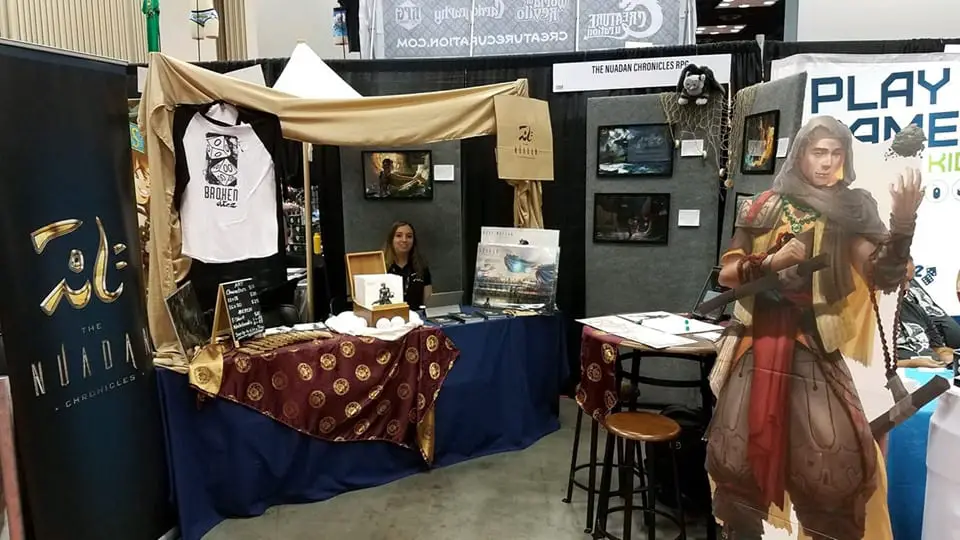
I got a chance to sit down and catch up with Brooke and Jason to learn about the world and get the scoop on all of the coolest parts of their game. Billed as a “post-post apocalyptic” RPG as well as an “electro-fantasy”, The Nuadan Chronicles has already gotten a lot of hype for its world and art, and there are high hopes for today’s big launch on Kickstarter.
Dan Arndt: Just to kick things off, what was the genesis of The Nuadan Chronicles? The “starting point,” so to speak?
Brooke: So what it originally started as, for us, was a homebrew of Warhammer 40k. I had called the world Nuada and was using a lot of Celtic Mythology, and as we were playing I was going “I’ll change this rule and I’ll change that rule.” Then, I hear from the other room as [Jason] is talking to our friend Jeff: “Brooke! We’re gonna make our own Tabletop RPG!” And I’m like…”What?” And you sit there for a moment just to sort of process it then you just…go. You start getting into it not really fully understanding what it is you’re getting into.
DA: So how long was the process from “not knowing what we’re getting into” to where we are now?
Brooke: We’ve officially been working on this for about seven years, but we really started to push it and get into it around 2015. That’s when we started looking at funding it, getting the rules set, and geting artwork together for the game.
DA: So you mentioned Celtic influences, what are some of the other things you drew on when designing the world of Nuada?
Brooke: We started the game with the Celtic, and you saw in a lot in the names. Khadar (one of the nations of Nuada) used to be called Connagh, for instance. But we started to pull globally from different influences. Uldris is very East Asian and draws heavily on Korea, with a different style of dress and the architecture that they use, while Lemaria is more rooted in African cultures. I threw every European Viking stereotype I knew into Caledon: they ride dire wolves-
Jason: They have really nice weapons too!
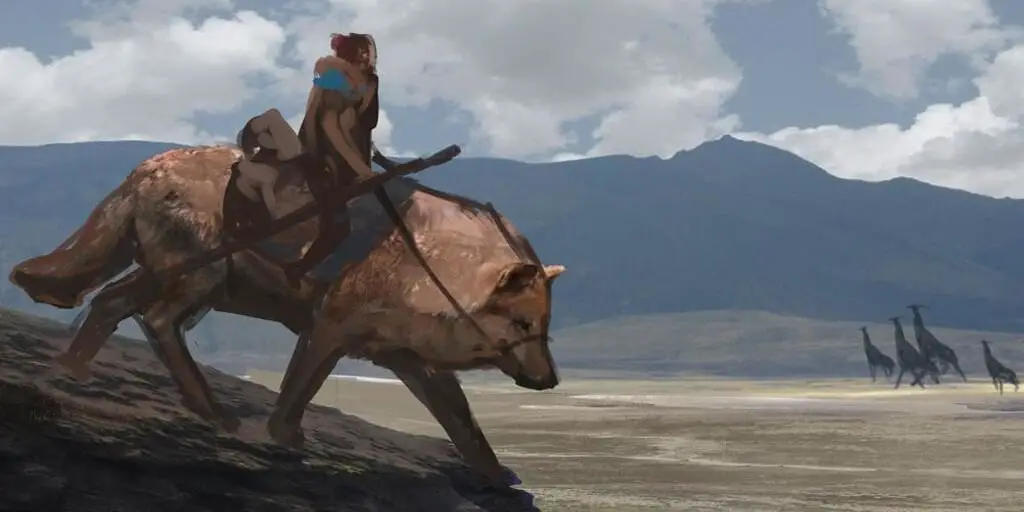
Brooke: They do! We worked really hard to include all kinds of different things in order to try to add some diversity to the world. There’s a lot of different places and they shape people in different and unique ways.
DA: Yeah, how many RPG’s are just like…five dudes who look like me at a castle talking about going to fight a dragon?
Brooke: Exactly!
Jason: And we look at our own world. There’s a multitude of cultures, and we’re all human, and these cultures can help shape a person’s playstyle or character.
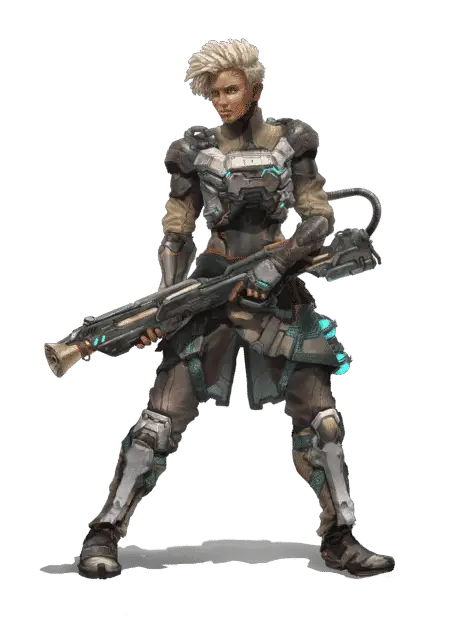
Brooke: We used it a lot for the languages, and we’re trying to get con-langs for all of the cultures. Uldris has a Gaelic/Korean influence, Khadar is a lot more Indian or Middle Eastern. Our magic language draws a lot on Persian and Cuneiform script to give it that ancient feel.
DA: Are you guys writing those yourselves?
Brooke: Some of it is ourselves, and some of it we’ve got to another con-langer and said “Here’s what we’ve done. Please make it better. Give it some consistency and structure.”
Jason: She has just…scrawls where she’s written on some notepad “Oh I want this word! I want this word! Oh this looks cool with this word!” And we’ll take that and send it to a con-langer and say “Here you go, we need this made.”
We have three languages created already. The magic language, which actually makes up our logo. If you look, it actually says “Nuada,” and we thought that worked well as we wanted to dive into the size and mythos of the world as well. It’s a great logo for us. We also have the Merathi language, which is sort of the trade language, the “Common”, but it has its own script and it has its own writing.
Brooke: And you’ll see that in the book in different artwork and places where the script is integrated into the world.
Jason: Our latest language we got back was the Lemarian language, and their culture is largely driven by technology as they find these ancient circuits. They don’t really know what they are, but their script is intended to keep that type of feel. So as they write it, it starts to looks like a circuit breaker.
DA: How did you go about designing the look of the world, from a visual standpoint?
Brooke: So we’ve always loved games that have a sort of “painter-ly” aesthetic to them, and we really wanted to have a crisp, earthy realism but with that aesthetic laid over it. So we try to find artists who can work with the style we want, based on what previous artists we’ve worked with have done. There’s a lot of great artists out there, but you have to find the one that fits your game. If you find artists who can consistently stick with that style? Stay with them.
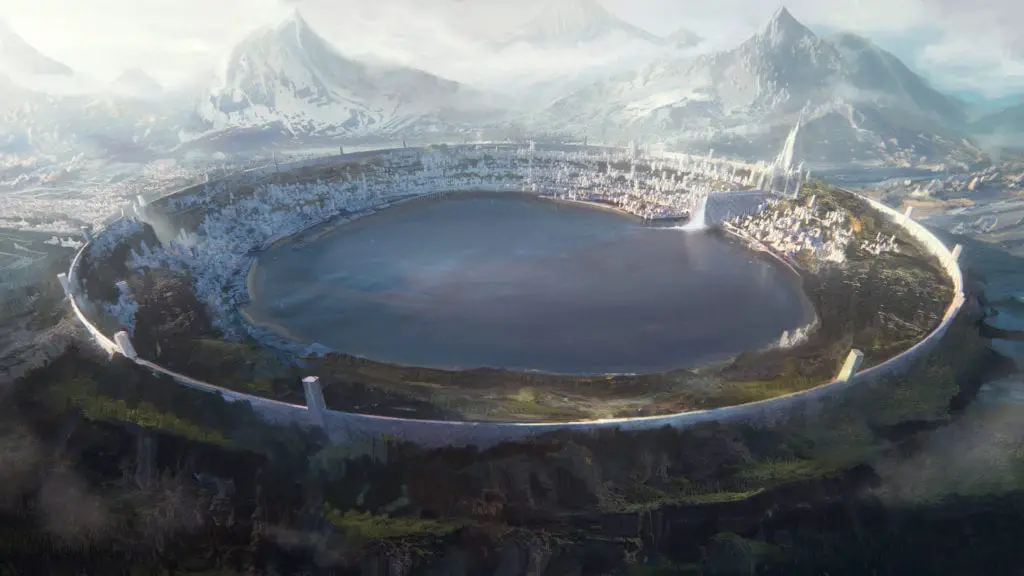
DA: Give me a brief rundown of the magic system of Nuada.
Brooke: Magic is word based, and it’s this sort of ancient and unchanged language. It’s not exactly a 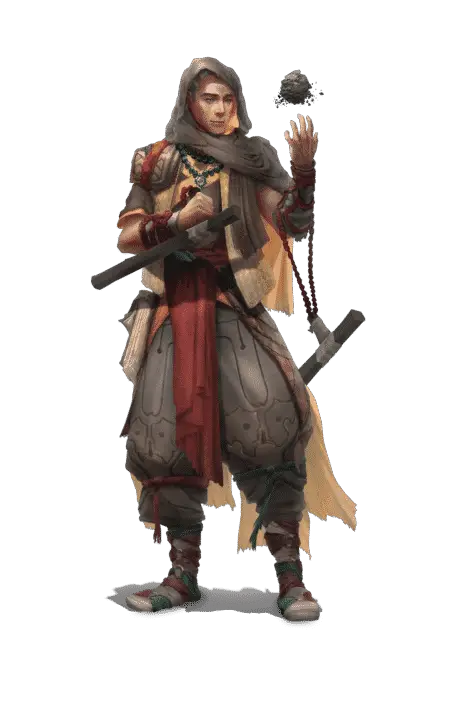 complete language, though, and people have sort of discovered words through dreams or when they just come to them. These are words like “fire,” or “touch,” or they translate it as something like “distance,” and what you’re doing is combining words together. When you say them with the intent, you create something with that word. Anyone can cast, so long as you can speak, which is both a good thing and a bad thing. The only downside, and the reason that tech has evolved the way it has in our world, is that magic is inherently dangerous to use sometimes. You build up “flux” within yourself when you say these words, because you’re creating something from nothing and the universe does not like it when you do that. After you reach a certain threshold, the universe will try to correct itself and create random effects for the player.
complete language, though, and people have sort of discovered words through dreams or when they just come to them. These are words like “fire,” or “touch,” or they translate it as something like “distance,” and what you’re doing is combining words together. When you say them with the intent, you create something with that word. Anyone can cast, so long as you can speak, which is both a good thing and a bad thing. The only downside, and the reason that tech has evolved the way it has in our world, is that magic is inherently dangerous to use sometimes. You build up “flux” within yourself when you say these words, because you’re creating something from nothing and the universe does not like it when you do that. After you reach a certain threshold, the universe will try to correct itself and create random effects for the player.
Jason: Mechanics-wise, there are certain characters who might advance to a certain degree of arcane prowess through teaching or study or practice, and they might have a higher threshold and can cast many more times than normal. But if you’re someone who doesn’t have this prowess, you’re most likely going to create a negative effect every time you cast. This is why the general population has to stay away from it. It’s become a sort of taboo, whereas with technology I can hurl a “fireball” or bullet at somebody and there’s no adverse effect. That’s how we can justify it lore-wise for magic and technology to co-exist within the world.
There’s of course a school of thought that this is how magic should be, and another that says no, magic is bad and we should try to stamp it out. Those are the Inquisitors. So it gives a little bit of tension and intrigue to our world as people tend to be either for tech or for magic. 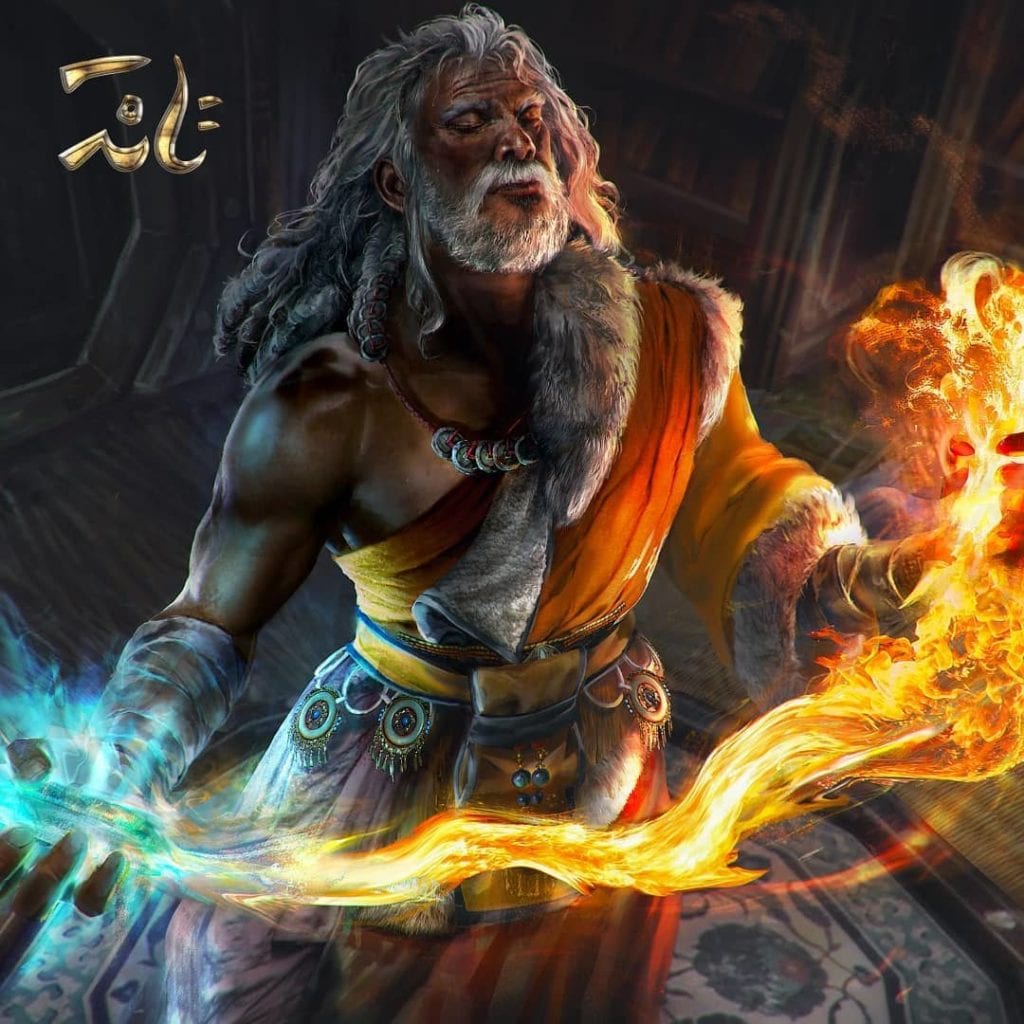
In one of my current playtest groups locally, I have one person who is all magic and another who is all tech and they don’t like each other! One thinks tech is better than magic and the other thinks the opposite, and I could easily see where this is going. What ended up happening in one of the playtests is that the magic user took a serious injury to his face and lost the ability to speak. Since you need to be able to speak to cast, he had tech installed to let him speak again. Literally he requires tech to use magic, and it’s one of those weird things that couldn’t happen in any other narrative I’m doing right now as the tech-user keeps hounding the magic-user about the situation.
DA: And magic manifests the same all the time, like “fire” is always “fire” etc?
Brooke: Yes, and there’s something really interesting with regards to the creatures of the world and magic. Some of them use it but it’s only one word: dire gryphons use wind magic to help themselves fly, there’s teleporting monkey-animals, etc.
DA: You’ve previously mentioned an influence from Avatar: The Last Airbender and this reminds me of how, say, the the Badgermoles taught people to Earthbend.
Brooke: Oh yes, I loooove Avatar.
Jason: ATLA has also influenced how we want to approach creature design.
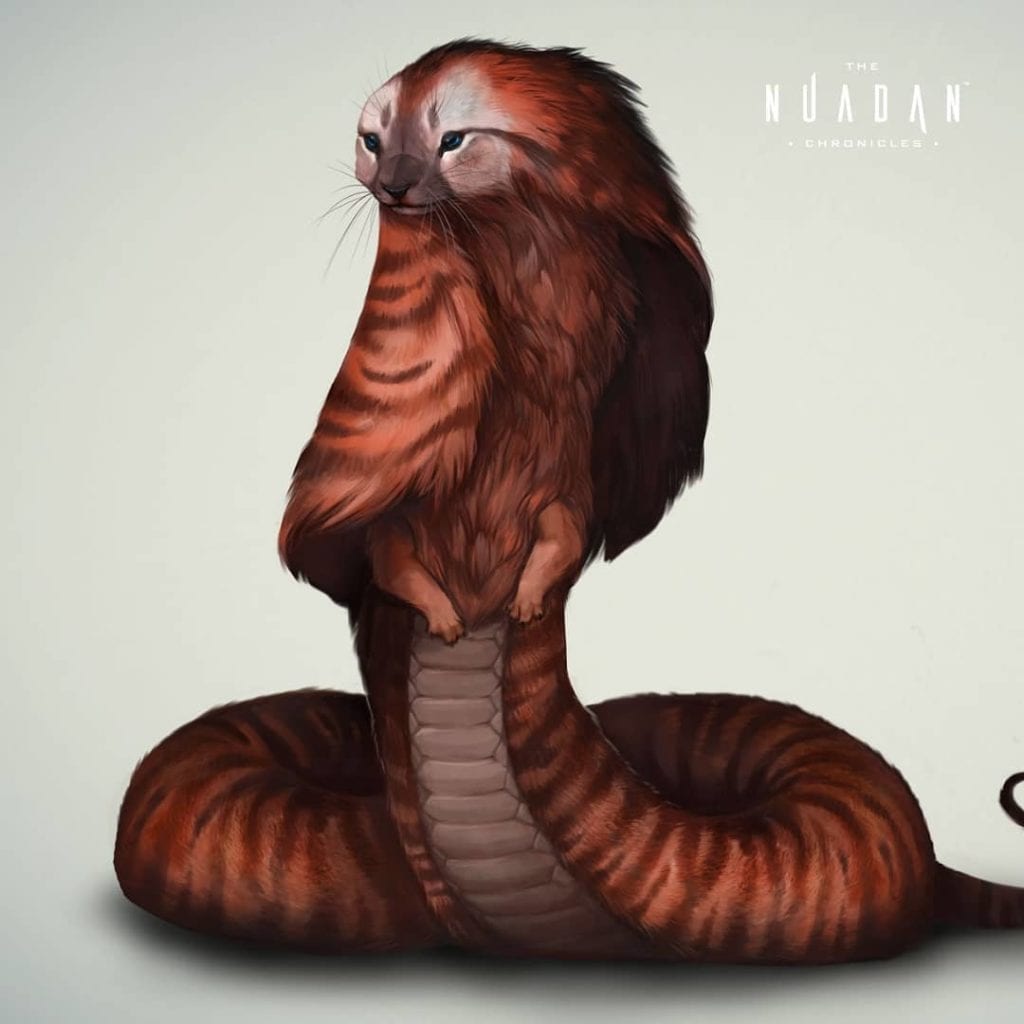
DA: No regular bears.
Brooke: I found one that’s like a mix of like a ferret…and a cobra. We call it a Puji, it’s one of the pets you can get…or you can eat them.
Jason: One of her characters in the playtest who has one as a pet.
DA: Is there a character who wants to eat it? That’s always one of my favorite dynamics in movies with little critters.
Jason: Not yet!
Brooke: We haven’t been hungry enough yet.
DA: I love the culture clash there though, it’s an interesting dynamic that fits into the big world you have.
Jason: And this is only really about 25% of the world.
Brooke: And even within that 25%, it’s really not explored. There are things and secrets there to be discovered, and it will change things.
DA: Will travel be a big part of the game?
Jason: Our first adventure is set in the nation of Uldris and as we release new nations as we go, it’ll expand the world as new information comes in. But there’s just so much info that we’re giving out right now that we want to keep some of the far off stuff mysterious, to keep that mystique. But there is airship travel and water travel. Seuma, who is “writing” the first book in-universe from his point of view as a traveller, will mention other places in passing but if it’s out of his area of expertise it won’t be super detailed.
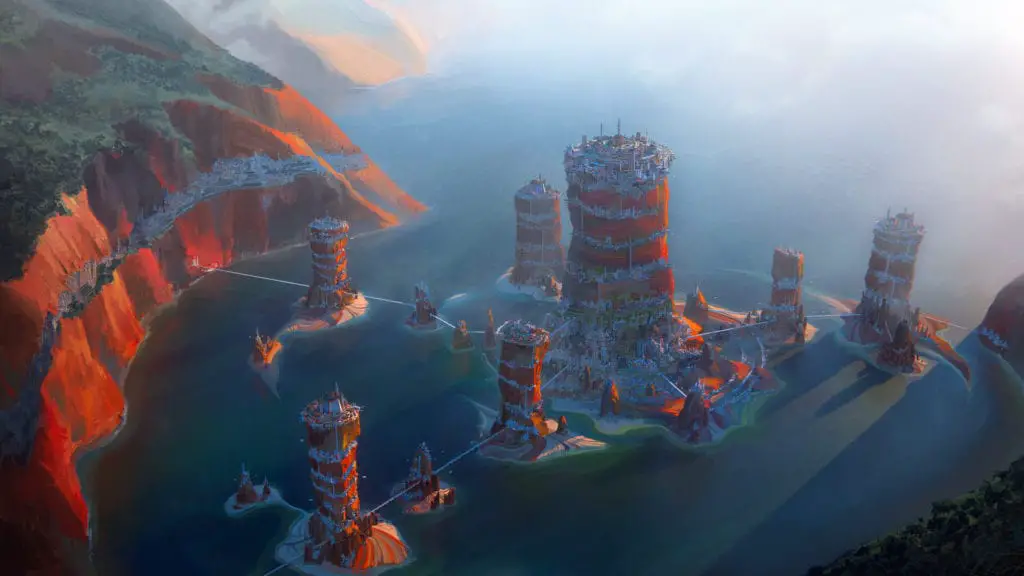
DA: You stuck with the dice-rolling system from 40k right? d100?
Jason: Yes, and that’s about the only thing we’ve kept in terms of rolling because we wanted players to feel that as they get better they won’t be punished by a terrible roll, like if you’re good at lockpicking we want you to always be good at that even if you roll badly.
Brooke: And even the d100 system isn’t exactly the same as we’ve modified it.
Jason: It’s very skills-heavy and talent-heavy, and you have an SR, a success rating, that you’re faced with and what you roll modifies that result. It helps us maintain a bell curve so that if you run into something that’s really tough your character can feel skilled enough to overcome it. It’s a nice change of pace in my opinion of actually benefiting players who are supposed to succeed at something.
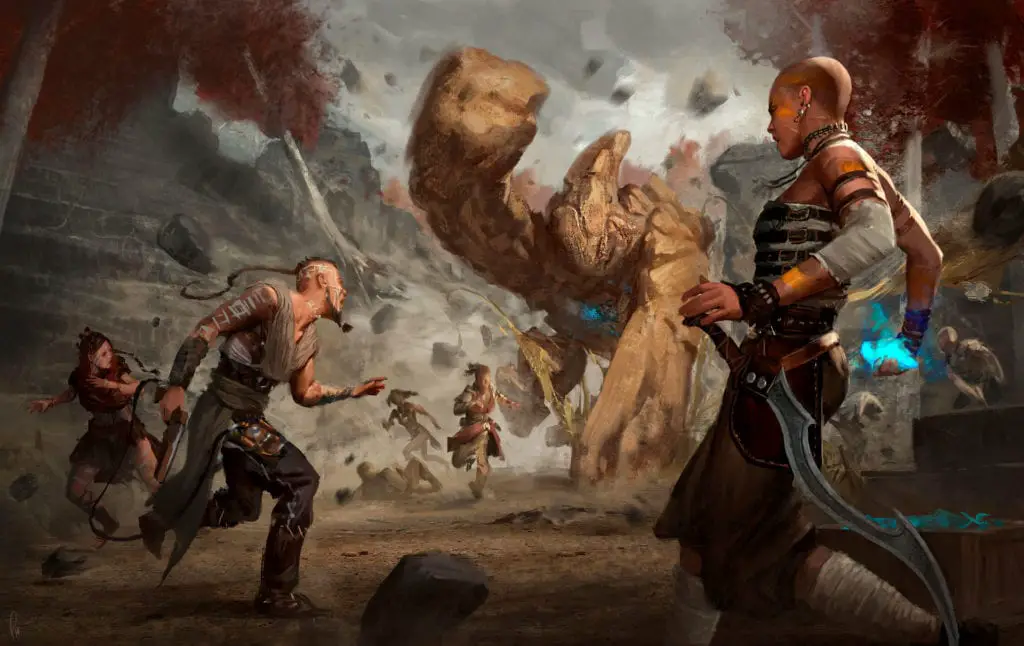
DA: Will you be doing pre-gen adventures or will it be more GM driven?
Jason: The first book will have intrigues for all the provinces in Uldris. These are plots by other nations or conflicts within that act as plot-hooks for GM’s. We are working on an official scenario that we are going to canonize after a certain time period. We don’t know when that is, as we’re focusing on getting the book itself done, but it will involve the fate of Uldris itself. What we want to do with every major release is move the timeline up a bit.
Brooke: We want to have a living world. We want the players’s actions to have impacts and consequences, and we’ll take feedback from the players and use the results to canonize it.
Jason: And that goes for official campaigns we release as well. We’ll make mention of it in media like newsletters or blurbs in the latest release that fill people in on the changes. The world is changing and growing, and we want to avoid that static medieval aesthetic.
Brooke: We originally had it as very Age of Exploration, sort of 1600’s-1700’s, but we thought we’d push it up a bit so now it’s more late-1800’s Industrial Revolution when the world is really starting to open up.
Jason: That’s where the culture clash comes in, with things like caste systems and treatment of workers coming into play, or that there’s royalty still. These changes will happen as they did in our world, and we want to reflect that in the game.
DA: What’s your favorite character or monster or location in the game?
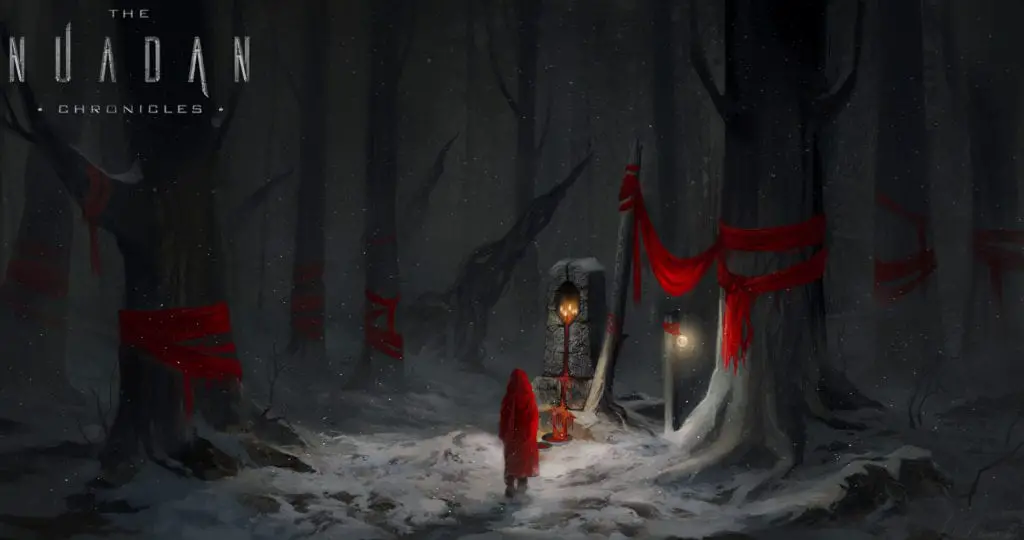
Jason: My favorite location is probably the Red Line.
Brooke: My favorite character is probably Asena, because I love characters who have this tragedy to them. She has the skull of her direwolf on her back and this giant odachi and she’s just super cool.
Jason: She loves big power characters but I tend to be pretty random. My favorite is probably Kadean, because I love the good old sword-and-board. For creature design, do you like the Koeyanmi or the Puji more?
Brooke: If I had to go to a pet-store right now, I’d probably go for the owl-cat, you just have to.
Jason: And I’d probably go with the Jindo, cause I just love dogs.
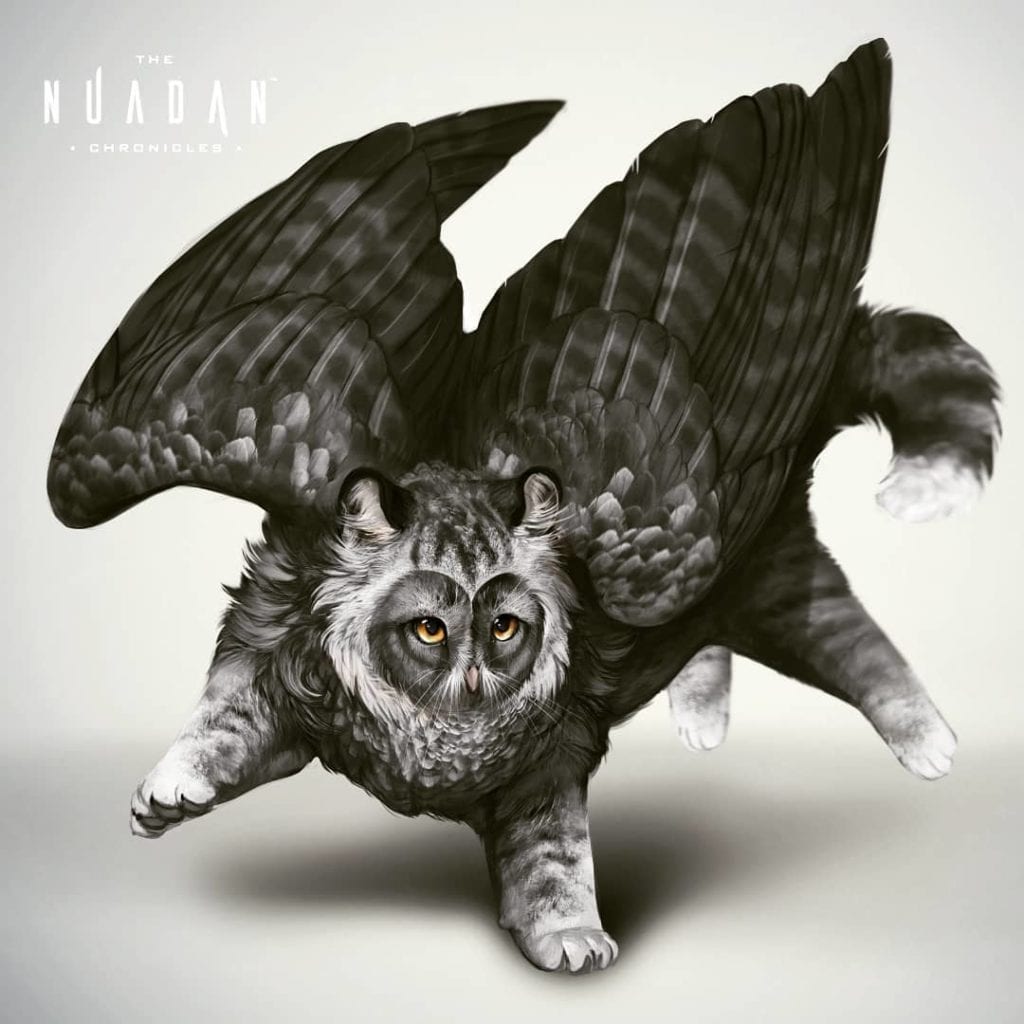
DA: So what’s releasing in today’s Kickstarter?
Brooke: We’re dividing the book in two: one will have the game’s rules and one will have the setting. This lets people choose, because some just want the rulebook and some just want the setting. We’ll also have PDF’s available of both.
Jason: We’ve been designing the lore book and getting a lot of feedback that people are liking just the art and just the world in general, but they don’t really want to play the tabletop RPG. So the way we’re setting up the book is as a first-person chronicle. Seuma, the “author,” will be writing down his journeys and we’ll have little things like time stamps. Our goal is that once you have them all lined up on the shelf, it has a real journal feel to it. And you get a nice little bookshelf out of it.
DA: Any possible stretch goals in the Kickstarter?
Brooke: Yes! We’ve looked into miniatures that we might want to get developed, custom dice-sets with special colors and number systems.
Jason: The minis are still in the works as we want minis for our Iconics, but we’re not wanting to enter the miniatures market, so if we hit a certain stretch goal we can have that available. As a player and a GM, I like minis. Especially since out artist who did our character designs is actually a 3D sculptor.
Brooke: One thing we’re hoping to do is hire writers who can get stories written to fit into the world so when it launches there will be all these options for players and GM’s.
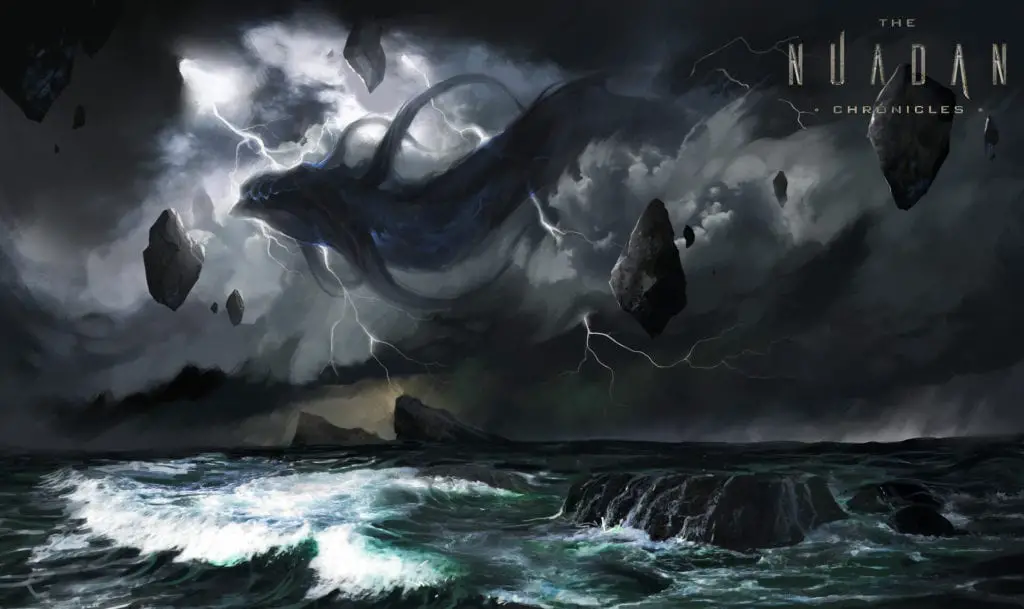
You can support the Kickstarter for The Nuadan Chronicles here, and follow the company on Twitter or Instagram. For more art and details on the world of Nuada, you can go to their website here. And be sure to keep an eye on The Fandomentals for more interviews and insights into the world of tabletop!
________________________________________________________________________________________
All images courtesy of Broken Dice LLC

